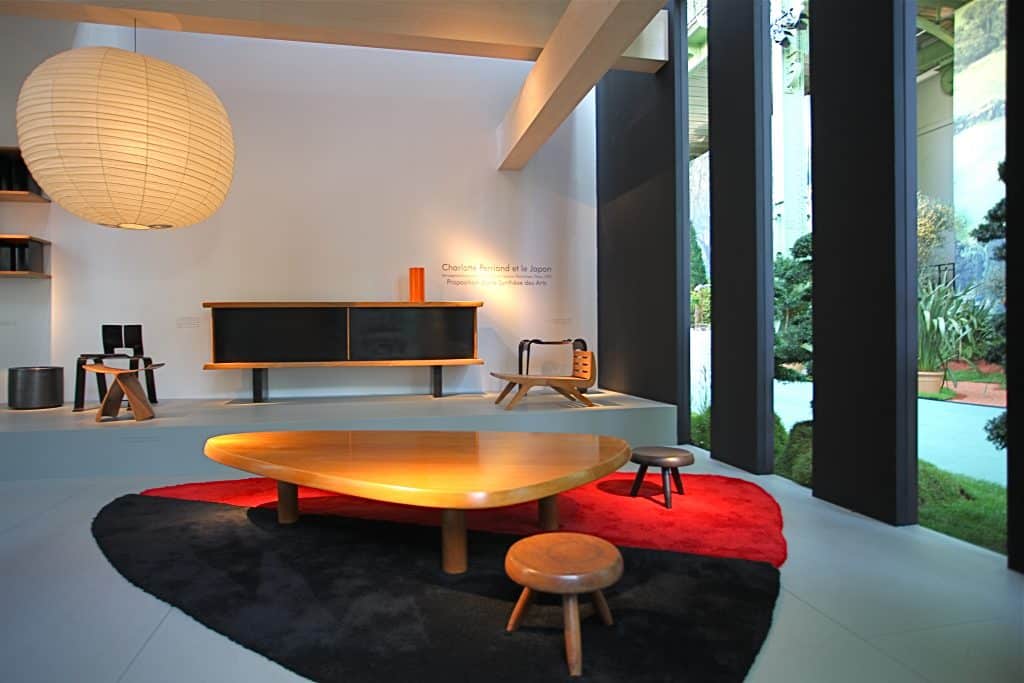A dazzling retrospective at the Foundation Louis Vuitton reappraises the career of modernist genius Charlotte Perriand
The French Modernist architect and design original Charlotte Perriand is hardly a household name, but chances are at least one of the objects in your household was inspired by her work. That pony skin chaise longue? Perriand designed it in 1928, fresh out of the École de l’Union Centrale des Arts Décoratifs in Paris. The leather swivel chair? Perriand was the first to conceive it, too.
If a loose-knit group of curators and collectors has its way, Perriand, who died in 1999 at the age of 96, might achieve household name status yet. For an introduction to her work, there’s the French furniture dealer and gallerist Francois Laffanour’s new tome, Living with Charlotte Perriand. But perhaps the closest thing to a direct encounter with her design universe is the dazzling retrospective currently up at the Foundation Louis Vuitton in Paris. “Charlotte Perriand: Inventing a New World,” takes the measure of her remarkable career, leaving no doubt that Perriand deserves a place in the modernist pantheon. Distributed throughout all four floors of the Frank Gehry-designed Foundation are almost two hundred of her works, including painstaking recreations of interiors. The showstopper is the dining area in her Paris apartment that caught the eye of Le Corbusier in 1927 when she exhibited it, aged 24, at the Salon d’Automne.

Given how Perriand shaped modernist design, it’s fair to ask why she is not as well known to the general public as Le Corbusier for whom she worked for over a decade. One explanation, in contemporary terms, is that it came down to branding. Le Corbusier was famously uninterested in the minutiae of design but he was a brilliant self-promoter. Perriand had little time to play the public relations game. She was too busy designing the masterpieces that would establish her in a male-dominated profession, no thanks to Le Corbusier, who did not conceal his low opinion of working women. So yes, her genius was partially eclipsed by the long shadow of the master, who claimed principal authorship of some of her most beguiling creations. Such was the price of working in his studio as a young unknown. Eventually, he relegated Perriand to the status of a collaborator, her name in third place, right after that of his cousin Pierre Jeanneret. Nevertheless, since pieces such as the pony skin chaise longue and other Perriand-designed items are marketed under the LC label, it’s human nature to think of them as “by” Le Corbusier. The exhibition’s website skirts around the Le Corbusier question, alluding only to how Perriand’s work preceded “current conversations about the roles of women and nature in our society.”
No matter. Perriand, who died in 1999 at the age of 96, was a bright light in the design firmament. She was a designer’s designer, an original, a force who applied her fierce intellect and creative spirit to furniture, apartments, and buildings, leaving behind a body of work that is cherished by collectors. As the New York Times recently noted, “[Perriand] found a way to match the strict Modernist demand for utility and practicality with the elusive quality known as good taste. Generations of architects and designers are in her debt.” And we lay people are in her debt, too.








![Join us May 6th at The Harmonie Club for the Spring Salon Luncheon, a beautiful gathering in support of a truly meaningful cause. Together, we’ll raise critical funds and awareness for @campgoodgriefeeh—@eastendhospice’s summer bereavement camp helping children and teens navigate loss with compassion, connection, and healing. [link in bio]](https://hamptonsrealestateshowcase.com/wp-content/uploads/sb-instagram-feed-images/491527001_18506092897030135_3117653411609489602_nfull.webp)
![Welcome to this exquisite custom-built home in the prestigious Quogue South estate section, just moments from Dune Road and some of the world’s most breathtaking ocean beaches. Completed in 2024, this expansive shingle-style residence offers 6 beds, 7 full and 2 half baths, a separate legal guest cottage, heated gunite saltwater pool with spa, all set on a beautifully manicured 0.74± acre lot. Represented by @lauren.b.ehlers of @brownharrisstevens. [link in bio]](https://hamptonsrealestateshowcase.com/wp-content/uploads/sb-instagram-feed-images/491516869_18505931593030135_4655757731678000577_nfull.webp)
![Discover 11 Oyster Shores, a unique marriage of thoughtful design, uncompromised execution and meticulous craftsmanship expressed across nearly 6,000± sq. ft. of highly curated living space. Brought to life under the watchful eye of Blake Watkins, the visionary behind WDD, the project is a refreshing departure from the ordinary. Represented by @nobleblack1 of @douglaselliman. [link in bio]](https://hamptonsrealestateshowcase.com/wp-content/uploads/sb-instagram-feed-images/491440257_18505740808030135_9064730571228880657_nfull.webp)
![Reserve your ad space now in the Memorial Day “Summer Kick-Off” Issue of #HRES! 🍋 Be seen by high-end buyers and sellers across the Hamptons, Manhattan, and South Florida—just in time for the start of the season. Secure your spot today and make waves this summer 🌊☀️ [link in bio]](https://hamptonsrealestateshowcase.com/wp-content/uploads/sb-instagram-feed-images/491441694_18505573426030135_4475989184561040528_nfull.webp)

![Tuesday, April 15, was Tax Day for most, but for someone in Palm Beach, it was closing day! The nearly 8,00± sq. ft. Mediterranean-style residence at 240 N Ocean Boulevard, with direct ocean views and a private, 100-foot beach parcel, closed at exactly $26,670,750. The seller was represented by Jack Rooney of @douglaselliman and Elizabeth DeWoody of @compass while Dana Koch of @thecorcorangroup brought the buyer. [link in bio]](https://hamptonsrealestateshowcase.com/wp-content/uploads/sb-instagram-feed-images/491445351_18505056166030135_4907944420436119099_nfull.webp)
![Previously featured on our 2024 Columbus Day issue cover, 74 Meeting House Road has officially sold! This stunning new construction in Westhampton Beach offers the perfect blend of thoughtful design and timeless style. Congratulations to @kimberlycammarata of @douglaselliman who held the listing! [link in bio]](https://hamptonsrealestateshowcase.com/wp-content/uploads/sb-instagram-feed-images/491441951_18504901357030135_2664904795600183799_nfull.webp)
![Located South of the highway in Southampton this 4 bedroom, 5.5 bath multi-story property, offers extensive exterior architectural detail throughout. 60 Middle Pond Road offers breathtaking views and tranquil living, nestled along the serene shores of Middle Pond and Shinnecock bay. Represented by @terrythompsonrealtor @douglaselliman. [link in bio]](https://hamptonsrealestateshowcase.com/wp-content/uploads/sb-instagram-feed-images/491451873_18504686110030135_5284427082339135969_nfull.webp)
